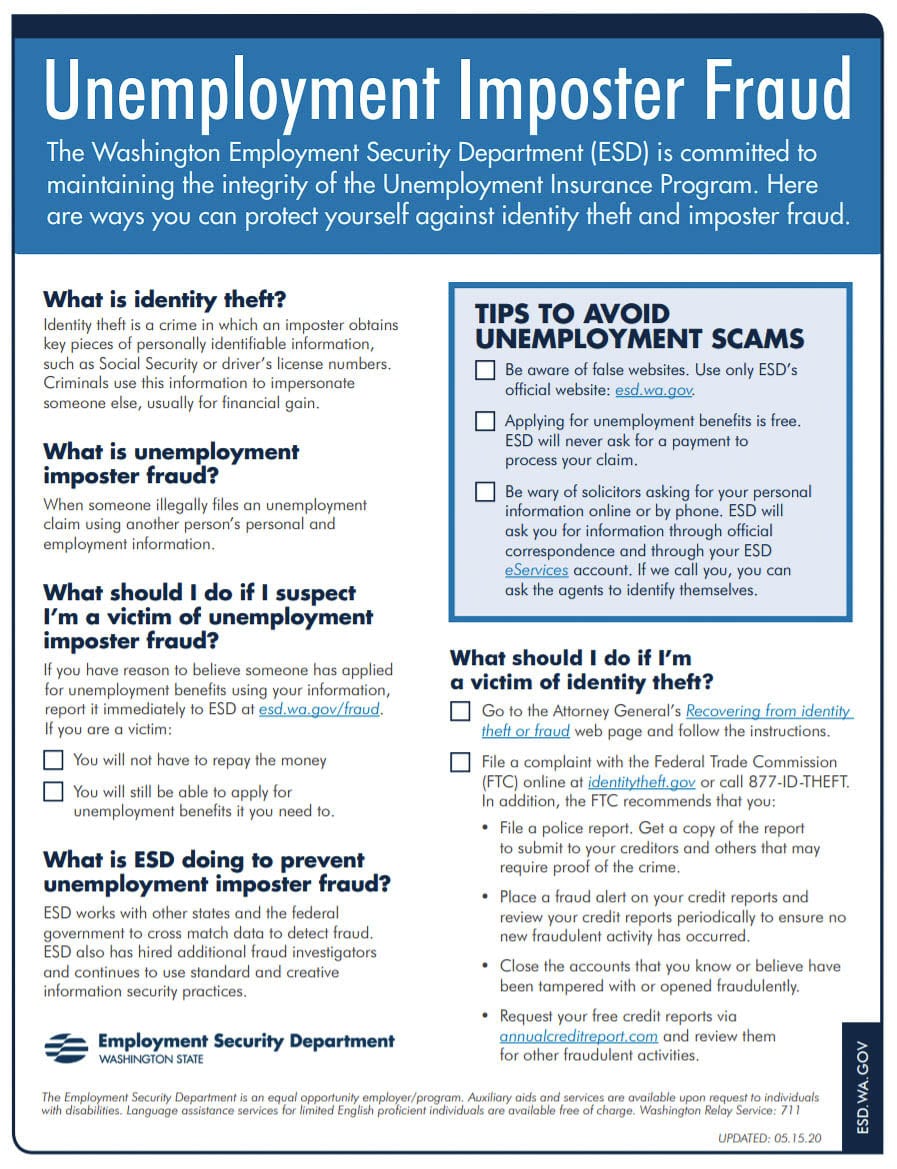An estimated 122,000 fraudulent claims were filed in the midst of the COVID-19 pandemic
OLYMPIA — A rush to get money out the door and a lack of proper security contributed to unemployment claims fraud that cost the state of Washington at least $600 million dollars this year.
That’s the short version of a report released today by Washington State Auditor Pat McCarthy, which found that the Employment Security Department (ESD) lacked adequate internal controls, and the state’s Office of Financial Management (OFM) improperly reported the impact of the fraud.

The audit report is the first, high-level accounting of what led the state to pay an estimated 122,000 “known or possible” fraudulent claims, and one of five expected reports on the matter.
“This audit is a building block – it is the first in a series that will examine the fraud at the ESD,” McCarthy said in a press release on Friday. “We are still learning about what happened and vetting the information. I expect more clarity in the months to come.”
The estimated number of fraudulent claims was a 41 percent increase over what ESD has previously noted. The agency said in a release on Wednesday that the increase came after claims previously considered suspicious were confirmed through ongoing investigations.
The $600 million estimated cost of the fraudulent claims was also an increase from the previously reported $576 million, though the state has previously said the amount could be as high as $650 million.
Sen. Ann Rivers (R-Vancouver) had said in June she believes the total cost of fraudulent claims could amount to nearly $1 billion.
Rivers said that total includes $600 million in fraudulent state claims, and $350-400 million in federal dollars lost to fraud. That amount, she said, was from a conference call with ESD earlier this year.
“The state auditor’s report on the federal loss will come out in mid-March and I anticipate we see additional losses there,” Rivers said in an email to Clark County Today. “There are a total of 5 audits that are being done due in large part to my sounding the alarm on the failures at ESD. I’ll be interested to see what they produce.”

To date, ESD says it has recovered a total of $356.4 million, though only $250.7 million of that has been assigned. The rest is awaiting the completion of investigations.
While the loss due to fraud is not inconsequential, ESD notes that they paid out more than $7.5 billion in unemployment claims to 926,815 people during the 2020 fiscal year, most of that after March. That’s a 684 percent increase in benefits funding to 390 percent more people than in fiscal year 2019.
The fraudulent claims, ESD noted in its response to the auditor’s report, accounted for less than five percent of total claims paid out, once the recovered money is accounted for.
Potential causes examined
After the US Congress approved the $2 trillion CARES Act stimulus package in March, which included an extra $600 per week federal unemployment benefit, there was pressure on the state to get claims finished as quickly as possible.
To accomplish that, Gov. Jay Inslee ordered that the usual one-week waiting period for new claims be waived. Usually that time is used to verify that a claim is legitimate.
That, combined with the failure of an automated fraud detection process (which went undetected for two full months) opened the door for scammers, the auditor’s report concludes.
Other types of claims were especially susceptible to fraud.
The federal Pandemic Unemployment Assistance Program, which offered benefits to self-employed people and others who would not typically be eligible for unemployment insurance, did not require documentation to substantiate employment.
The state says ESD has since implemented a series of changes, including increasing customer service staffing, and creating surge capacity to investigate claims. Since June 2, 2020, the state claims a “dramatic reduction” in fraudulent claim attempts.
In addition to those issues, the report notes that the Office of Financial Management made the unusual decision not to list the losses due to fraud as a separate category on their financial statements, usually labeled as an “extraordinary event.”
“This fraud is a source of major concern for the public, legislators, and the media – all of whom are considered users of these financial statements,” Auditor McCarthy said. “Additionally, these funds were given to the state to use for the benefit of Washingtonians. The financial statements should be transparent about what happened.”
In making that decision, OFM concluded that the state had not, in fact, incurred any financial losses from the fraudulent payments, since the money would likely be reimbursed by the federal government.
The audit found ESD originally reported incorrect numbers for the state’s financial statements, planning to instead account for and investigate the fraud in its entirety during the next fiscal year. Those numbers have been corrected in the final Comprehensive Annual Financial Report.
The Auditor’s office says their second of the five financial reports – an accountability audit of ESD – is due in the first quarter of 2021.




